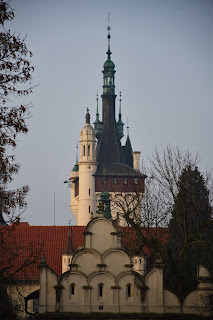Nakhon Pathom
This Monday was a holiday commemorating the death of Bhumibol Adulyadej, Thailand’s previous king. Although I was still a bit tired from my trip to Chiang Rai, the sky was so blue that I could not help feeling drawn outside. At eight o’clock, I called a Grab cab and rode it all the way to the nearby town of Nakhon Pathom; I should point out there are trains from Bangkok to Nakhon Pathom, but I could not for the life of me figure out the schedule, which seemed to indicate that only one single train would leave that entire morning.
This Monday was a holiday commemorating the death of Bhumibol
Adulyadej, Thailand’s previous king. Although I was still a bit tired from my
trip to Chiang Rai, the sky was so blue that I could not help feeling drawn
outside. At eight o’clock, I called a Grab cab and rode it all the way to the
nearby town of Nakhon Pathom; I should point out there are trains from Bangkok
to Nakhon Pathom, but I could not for the life of me figure out the schedule,
which seemed to indicate that only one single train would leave that entire
morning.
The main attraction of Nakhon Pathom is the
120-metre-tall Phra Pathom Chedi, said to be one of the biggest stupas in the
world. According to some accounts, the holy site has a history that reaches all
the way back to the fourth century BCE, when a Buddhist temple was erected in
Nakhon Pathom. By the beginning of the second century BCE, a stupa had
allegedly been built, but it was first mentioned by Buddhist texts from 675 CE.
Phra Pathom was thus the principal stupa of Nakhon Pathom during its heyday as
the largest settlement in the Dvaravati Kingdom, which existed from the sixth
to the eleventh century.
After many years of neglect, the stupa was
rediscovered in the nineteenth century by a certain monk named Mongkut, who
would later go on to become King Rama IV. As king, Mongkut had the stupa
rebuilt in the popular Sri Lankan style, which favoured long, simple, conical
roofs over the roofs familiar from Ayutthaya: octagonal structures curving
gently towards the top and filled with niches. Since the journey between
Bangkok and Nakhon Pathom took a long time before the age of automobiles, a
palace was built west of the stupa for royal visitors. Unfortunately, the
palace complex is closed between nine in the morning and four in the afternoon,
so I did not have a chance to visit it.
Following a clockwise walk around the stupa and a
fruitless trip to the palace grounds, I called a Grab cab to the Phra Prathon
Chedi, which lies about four kilometres east of its more famous counterpart.
Unlike the Phra Pathom Chedi with its golden, bell-shaped base, Phra Prathon
Chedi proudly exhibits its brick quadrilateral foundations dating all the way
back to the fourth century. At the top of this base stands a prang which, as
its white coating indicates, was added much later.
My last stop was Wat Sam Phran, a temple about one third of the way between Nakhon Pathom and central Bangkok. A few years back, this temple captivated the internet with its unusual design: it consists of a pink seventeen-story tower enveloped in the coils of a giant dragon. While it stands in the middle of a very unremarkable urban landscape, the temple continues to draw a number of tourists, many of whom scale the seventeen floors to get a view of God knows what. I, for one, did not feel tempted in the slightest, judging that the best view was of the tower itself.

















Comments
Post a Comment